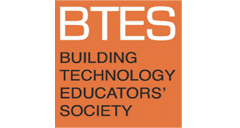From Integration to Embodiment: An Evolving Approach to Teaching Design and Building Technology
Abstract
This paper explores how an expanded notion of ‘embodiment’ can provide a conceptual and pedagogical framework for teaching the integration of building technology and design, particularly in the context of comprehensive studios in professional architectural programs. Drawing on the rich discourse around the term embodiment in the humanities, architectural theory, and contemporary sustainable design, we argue that our understanding of embodiment can be expanded to include notions of embodied practice, aesthetics, and knowledge. After outlining this conceptual framework, we go on to discuss specific pedagogical goals and share examples of assignments and student responses from recent iterations of the comprehensive studio at our university. We identify four areas of focus that support a more embodied approach to architectural education: 1) generative models, 2) the problem of the section, 3) assemblies of exchange, and 4) deep specifications. Reviewing each of these areas in terms of their potential to foster embodied forms of design, we outline a set of frameworks for future development of comprehensive building design sequences, and for architecture curriculum in general.
Keywords: Design, Pedagogy, Embodiment, Building Technology
How to Cite:
Kanter, J. A. & Williams, R., (2023) “From Integration to Embodiment: An Evolving Approach to Teaching Design and Building Technology”, Building Technology Educators’ Society 2023(1), 211-218. doi: https://doi.org/10.7275/btes.1954
Downloads:
Download PDF
